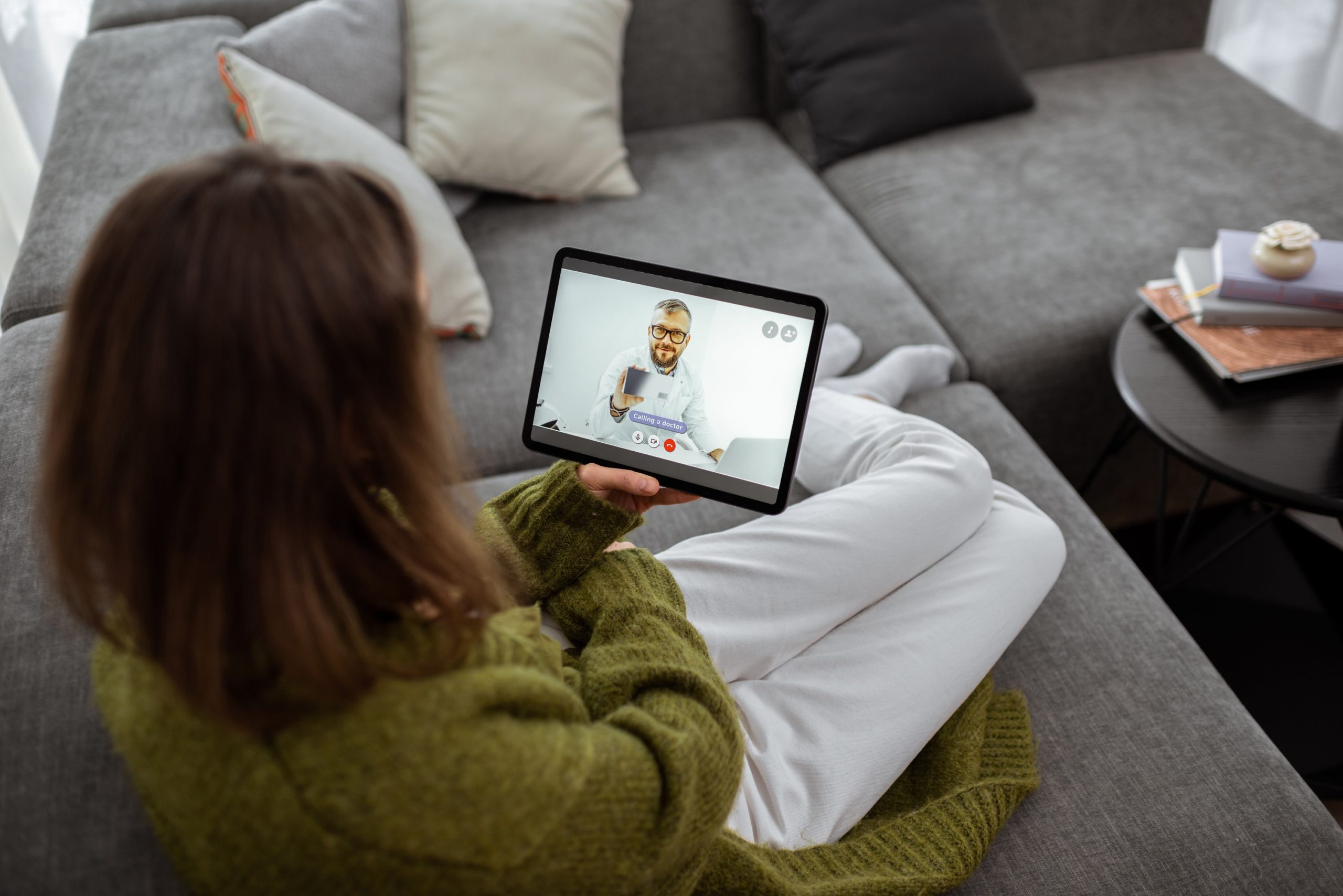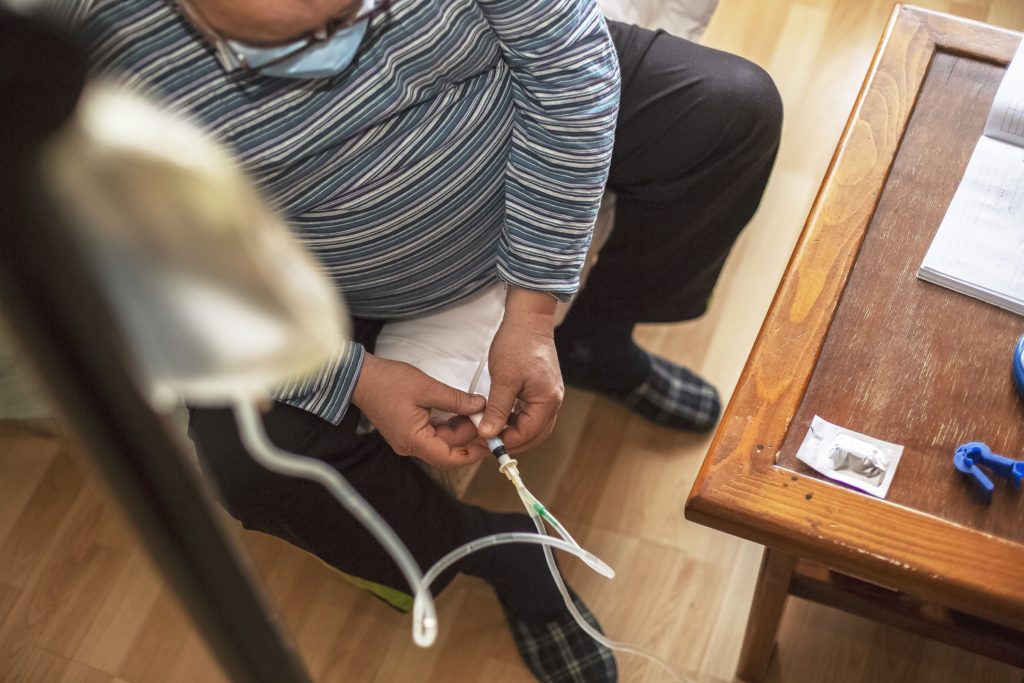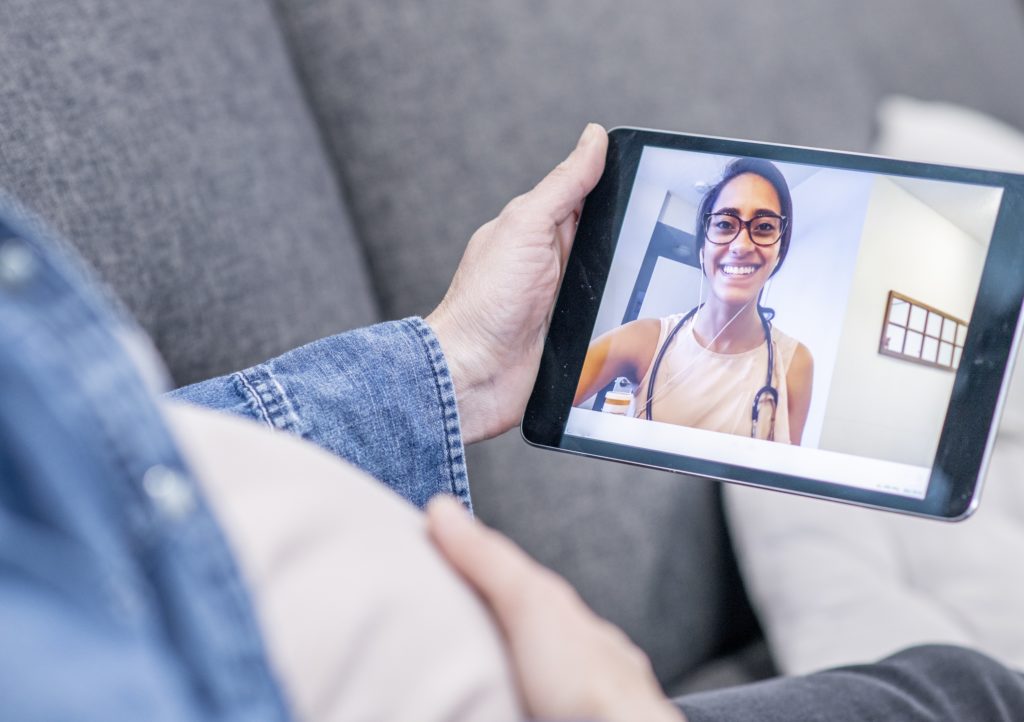
How Microsoft customers and partners in Europe are bringing health care home
In recent weeks, the world has been on a steep learning curve when it comes to remote health care. What can we learn from those who have been managing patients remotely for some time?
For the one-third of Europeans living with a chronic illness, frequent trips to the doctor are simply a part of daily life. Improving the management of these and other conditions outside hospitals and clinics can have a significant positive impact on national health budgets, health care professionals’ schedules and patients’ overall wellbeing – helping them to live better, not just longer.
To this end, Microsoft customers and partners across Europe are developing remote health care solutions that allow patients to manage conditions from the comfort of their own homes, while still staying in close contact with health care providers.
From hospital room to living room
In Finland, nephrologist Dr. Virpi Rauta is leading Helsinki University Hospital’s (HUS) efforts to enable patients with chronic kidney diseases to undergo life-saving dialysis treatment at home, rather than having to travel to the hospital on average three times per week. This reduces the cost of health care delivery, but also improves patient safety and quality of life. One-third of all her patients now have their dialysis treatment at home, but Dr. Rauta would like to see this share increase.

(Photo by Jakovo/iStock/Getty Images Plus)
“Before they reach the stage of needing dialysis, chronic kidney disease patients typically progress slowly, within months,” she says. “This ‘pre-dialysis’ phase is when we need to be educating them about their specific options. By analyzing patient data, we can start to predict this group’s risk factors – and better advise on the right course of treatment.”
Dr. Rauta’s project aims to identify patients suitable for home dialysis at an early stage and remotely monitor current patients. The data is then analyzed using Microsoft Azure cloud services, generating actionable insights that doctors can use to tweak and tailor treatment plans as needed. The project is part of a wider HUS CleverHealth Network initiative to produce artificial intelligence (AI) assisted solutions for early disease detection, automated diagnostics and treatment selection, and comprehensive home care.
Dr. Rauta explains why this is so valuable: “The more patients undergo dialysis at home, the less we see them in hospital. This is good, but it does mean that I might only see some patients twice a year – and I know very little about what happens in between appointments. Remote monitoring and data analysis can bridge that gap and ensure treatment stays on track.”
While patients with chronic kidney disease are typically in their 50s or 60s, this isn’t the only age range for which technology is generating new insights for remote disease management.
Obstetrician and gynecologist Dr. Saila Koivusalo leads another CleverHealth Network project at HUS, this time focused on improving the management of gestational diabetes. To improve the treatment and monitoring of these patients, the team has been developing an application to measure, monitor and analyze a mother’s key health indicators, such as glucose levels, physical activity, nutrition, stress, sleep and weekly weight. This data is stored and analyzed using Microsoft Azure cloud technology.

(Photo by FatCamera/E+/Getty Images)
By tracking expectant mothers’ health at a granular level, Dr. Koivusalo can ensure women get the right guidance at the right time. “Very often, women experiencing gestational diabetes feel alone in dealing with their condition because, while they get good guidance, they usually get it too late,” she says. “If we can contact expectant mothers earlier, we can ensure everyone receives the same standard of care.”
Dr. Koivusalo warns that experiencing diabetes in pregnancy can increase both the mother and baby’s risk of developing chronic diabetes in future, so addressing it early is critical. While this project is still in a pilot phase, Dr. Koivusalo sees its potential for supporting at-risk women at all stages of pregnancy – from when they are simply planning, through to postnatal care and follow-up.
Starting at the heart
The maxim “prevention is better than cure” has also been adopted by Portugal’s Cova da Beira Hospital Center, which is using a cloud-based health tracking solution developed by Microsoft partner HopeCare to monitor patients at risk of heart failure.
Chronic heart failure affects 380,000 people across Portugal and is the leading cause of hospitalization among those aged 65 or over. This has increased by 33% in the last decade. Hospital admissions are mostly caused by a sudden worsening of heart failure symptoms such as breathing difficulties, swollen legs or fatigue. Such incidents, known as decompensation attacks, are scary – but they can be predicted and sometimes even prevented through close and regular health monitoring.
To this end, Cova da Beira has been trailing the use of HCAlert, a remote monitoring tool that collects, stores and analyzes patient data related to body temperature, blood oxygen level (SaO2), blood pressure, heart rate, weight and activity, in the Microsoft Azure cloud. A triage algorithm enables clinicians to identify which data points are most relevant and flags up any vital parameters that are not aligned with plans for the patient in question.
Since the solution was launched, clinical teams have seen a significant drop in hospital admissions (-62%), overall length of hospital stays (-48%), mortality rate (-42%) and emergency room visits (-85%), among the pilot patient groups. Most importantly however, both doctors and patients feel supported.
“It’s good to feel accompanied by someone at all times – I know I’m being monitored and if anything is out of the ordinary, a nurse calls me to check in,” says Alberto Galvão, a 74-year-old who has an implantable cardioverter defibrillator (ICD).
From a clinical perspective, cardiologist Luis Oliveira describes how remote monitoring supports his work: “If it’s something simple, I can call the patient, ask how they are feeling and suggest an adjustment to the treatment if needed. Whereas if the data suggests that it may be something more serious, we’ll tell the patient to come straight to the hospital.”
Keeping health care human
Remote care solutions also play an important role in limiting vulnerable patients’ exposure to risky environments. In Ireland, Microsoft has been working with University Hospital Limerick to help physiotherapists deliver essential exercise classes to cystic fibrosis (CF) patients via Microsoft Teams. Regular, tailored exercise sessions are essential for helping CF patients keep their lungs clear of the layer of mucus that builds up as a result of their illness. Yet at the same time, CF patients are highly susceptible to infection, making it imperative to limit the time they spend attending hospital appointments.
One-on-one online consultations allow patients to get the most out of their exercise sessions without running the risk of an exhausting journey to hospital or exposure to infection. They can also help save time and hassle more widely. Polish telemedicine provider Telemedico, for instance, is able to fully resolve 90 percent of cases online, thanks to the use of AI-enabled triaging that immediately directs patients toward the most relevant doctor for their issue. Remarkably, Telemedico’s online consultations tripled to 100,000 in March, which was the first full month of the pandemic in Europe.
This focus on patient comfort, not just their treatment, is key. After all, health care remains fundamentally a human-centric sector, and patients need to be seen as people first and foremost.
As digital health tools evolve, their potential to improve patients’ quality of life must be considered alongside their role in improving clinical outcomes. Every patient has a fundamental right to thrive, not just to survive. Microsoft will continue to work with our customers and partners across Europe to do our part to help make better care a reality for all.
